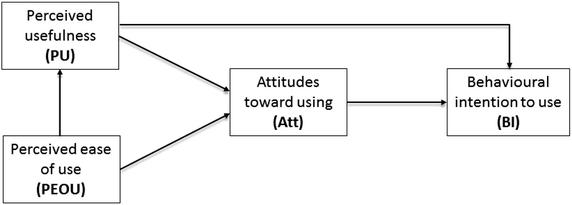Perceived Ease Of Use Theory
Perceived ease of use are the two cognitive beliefs that postulate theory on system usage by individual behavioural intention to use a system.
Perceived ease of use theory. Similarly consult 2002 noted that perceived ease of use refers to the. Theory of acceptance model sumber. Perceived ease of use and perceived usefulness are significant predictors of intention to use e government services in ukraine shovkovyy 2010. Perceived ease of use refers to the degree to which a person believes that using a particular system would be free of effort davis 1989 p.
Perceived ease of use is the degree of lack of effort required by the user in adopting a given technology. Davis bagozzi and warsaw 1989 averred that the use of technology system is influenced directly or indirectly by the user s behavioral intentions. Easy to understand or use could be considered as perceived ease of use. Contemporary information systems alternative models to tam.
Perceived ease of use was also significantly correlated with current usage r 45 study 1 and future usage r 59 study 2. The technology acceptance model tam is an information systems theory that models how users come to accept and use a technology. Perceived ease of use also affects perceived usefulness. According to mathieson 1991 the perceived ease of use is the consumer s perception that banking on the internet will involve a minimum of effort.
Selanjutnya ease to use perceived didefinisikan the degree to which a person believes. Based on social presence theory social influence theory and triandis modifications to the theory of reasoned action causal relationships between the proposed antecedents and perceived usefulness and perceived ease of use are examined. Persepsi kemudahan penggunaan perceived ease of use davis dalam jogiyanto 2007 menyebutkan bahwa ease artinya freedom from difficulty or great effort. The actual system use is the end point where people use the technology behavioral intention is a factor that leads people to use the technology.
To extend the theory of technology acceptance this paper offers an explanation for the psychological origins of usefulness and ease of use. The behavioral intention bi is influenced by the attitude a which is the general impression of the technology. Self efficacy is similar to perceived ease of use as defined above. In the case of jordan it was found that perceived credibility perceived ease of use perceived usefulness as well as computer self.












